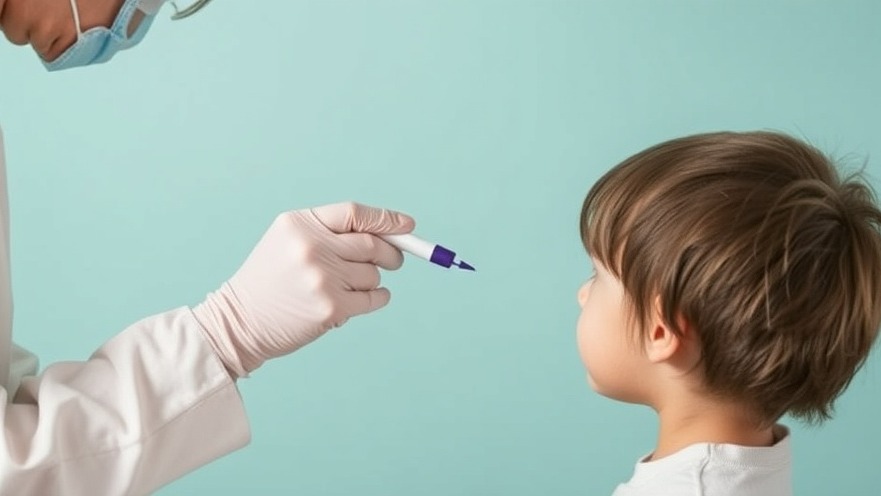
The Breakthrough in Tuberculosis Testing: A Game Changer for Children
In an era where early detection is pivotal to combatting infectious diseases, a groundbreaking development in tuberculosis (TB) diagnostics has emerged. Researchers at Tulane University have introduced a smartphone-sized device capable of providing accurate TB diagnoses in under an hour. This innovation is especially significant for children, who often face challenges in receiving timely and accurate TB diagnoses.
Why Tuberculosis Testing Matters
Currently, tuberculosis remains the deadliest infectious disease worldwide, infecting an estimated 10 million people every year. Unfortunately, more than 1 million children fall ill with TB annually, yet over half of these cases go undiagnosed or unreported. With current traditional testing methods being cumbersome and expensive, the need for effective diagnostic tools is critical, particularly in low-income settings where healthcare facilities are scarce.
How the New Device Works
The new handheld diagnostic tool, known as the lab-in-tube assay (LIT), has several remarkable features that set it apart from existing technologies. It utilizes a straightforward method to detect Mycobacterium tuberculosis (Mtb) DNA from saliva, blood, and sputum samples. This non-invasive technique is especially beneficial for testing children who may resist traditional blood draw procedures, thereby increasing the likelihood of obtaining accurate results.
Economic Viability of the LIT Device
The economic aspect of the LIT device is also noteworthy. Each device costs less than $800, and individual tests are priced at less than $3—vastly more affordable when compared to conventional TB tests, which can exceed $19,000 in initial costs and around $100 per test. This affordability could enable widespread deployment in resource-limited settings, driving down the rates of undiagnosed and untreated TB cases.
The Future of TB Diagnosis
The introduction of the LIT device signals a tremendous shift in how TB can be diagnosed and treated, potentially assuring earlier intervention and reduced patient mortality rates. “TB remains a critical public health concern in low-income countries, and diagnosis using a cheap, simple test is needed not only to treat patients with TB but to prevent further spread of the disease,” said Dr. Tony Hu, the study’s senior author.
Addressing a Growing Health Crisis
The recent resurgence of TB cases, exacerbated by disruptions in healthcare access due to the COVID-19 pandemic, has highlighted the urgent need for innovative healthcare solutions. In 2021 alone, an estimated 4.2 million TB cases went unreported. With the rollout of the LIT device, public health officials can seize the opportunity to bridge the gap in TB diagnosis, particularly in vulnerable populations.
Implications for Healthcare Practitioners
For concierge health practitioners eager to stay updated on emerging medical innovations impacting patient care, the LIT device represents a significant advancement. The potential of the LIT test extends beyond TB; it showcases how technology can transform healthcare delivery, particularly in underserved areas where timely and cost-effective solutions are paramount.
Conclusion: Take Action to Adopt Innovative Solutions
As healthcare practitioners, remaining abreast of technological advancements like the LIT device can empower you to enhance patient outcomes significantly. By embracing such innovative solutions, you can contribute to combatting global health crises. Continue to educate yourself, invest in effective tools, and play an active role in advocating for accessible TB testing initiatives within your communities.
 Add Row
Add Row  Add
Add 






Write A Comment